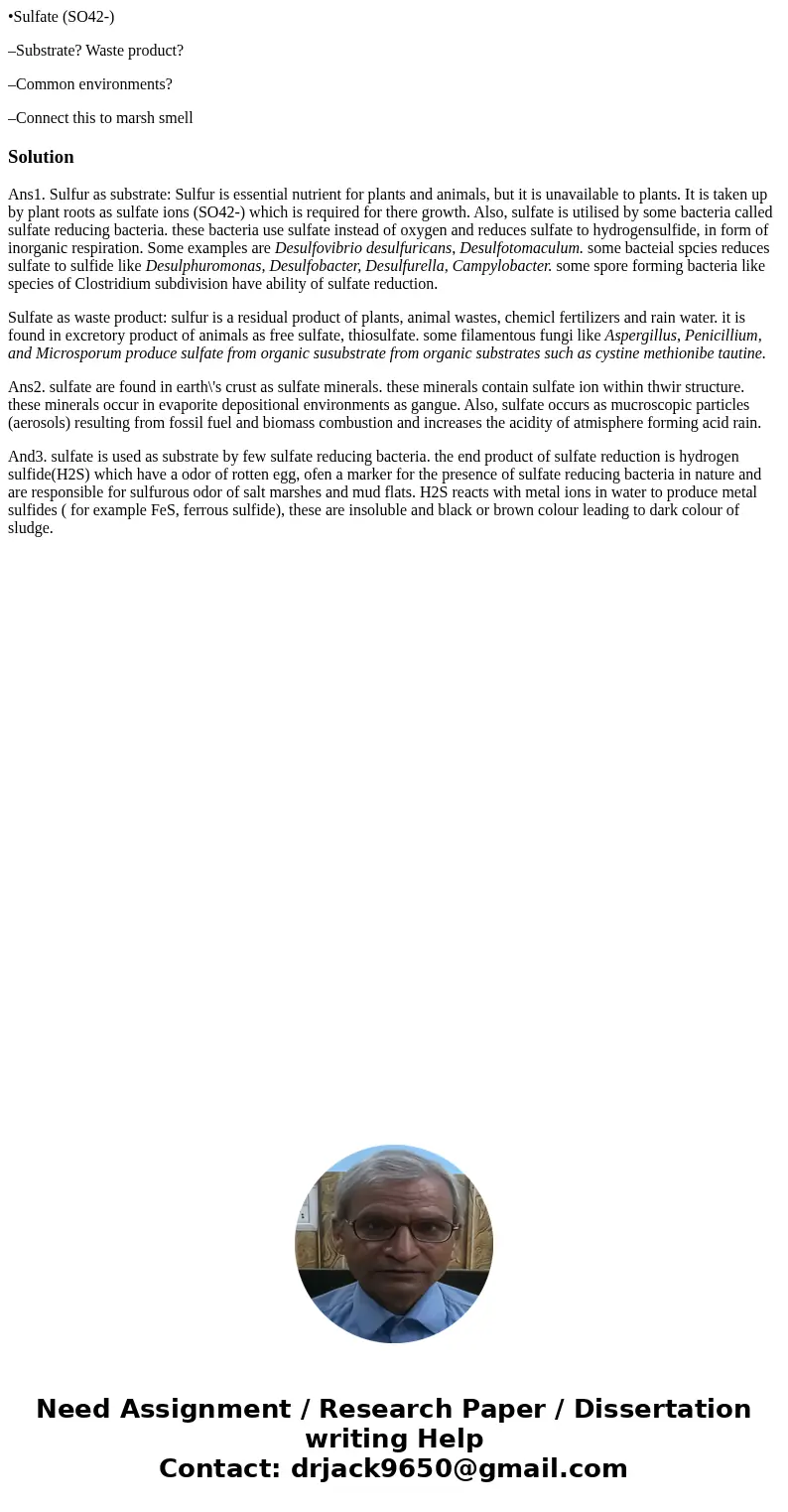Sulfate SO42 Substrate Waste product Common environments Con
•Sulfate (SO42-)
–Substrate? Waste product?
–Common environments?
–Connect this to marsh smell
Solution
Ans1. Sulfur as substrate: Sulfur is essential nutrient for plants and animals, but it is unavailable to plants. It is taken up by plant roots as sulfate ions (SO42-) which is required for there growth. Also, sulfate is utilised by some bacteria called sulfate reducing bacteria. these bacteria use sulfate instead of oxygen and reduces sulfate to hydrogensulfide, in form of inorganic respiration. Some examples are Desulfovibrio desulfuricans, Desulfotomaculum. some bacteial spcies reduces sulfate to sulfide like Desulphuromonas, Desulfobacter, Desulfurella, Campylobacter. some spore forming bacteria like species of Clostridium subdivision have ability of sulfate reduction.
Sulfate as waste product: sulfur is a residual product of plants, animal wastes, chemicl fertilizers and rain water. it is found in excretory product of animals as free sulfate, thiosulfate. some filamentous fungi like Aspergillus, Penicillium, and Microsporum produce sulfate from organic susubstrate from organic substrates such as cystine methionibe tautine.
Ans2. sulfate are found in earth\'s crust as sulfate minerals. these minerals contain sulfate ion within thwir structure. these minerals occur in evaporite depositional environments as gangue. Also, sulfate occurs as mucroscopic particles (aerosols) resulting from fossil fuel and biomass combustion and increases the acidity of atmisphere forming acid rain.
And3. sulfate is used as substrate by few sulfate reducing bacteria. the end product of sulfate reduction is hydrogen sulfide(H2S) which have a odor of rotten egg, ofen a marker for the presence of sulfate reducing bacteria in nature and are responsible for sulfurous odor of salt marshes and mud flats. H2S reacts with metal ions in water to produce metal sulfides ( for example FeS, ferrous sulfide), these are insoluble and black or brown colour leading to dark colour of sludge.

 Homework Sourse
Homework Sourse